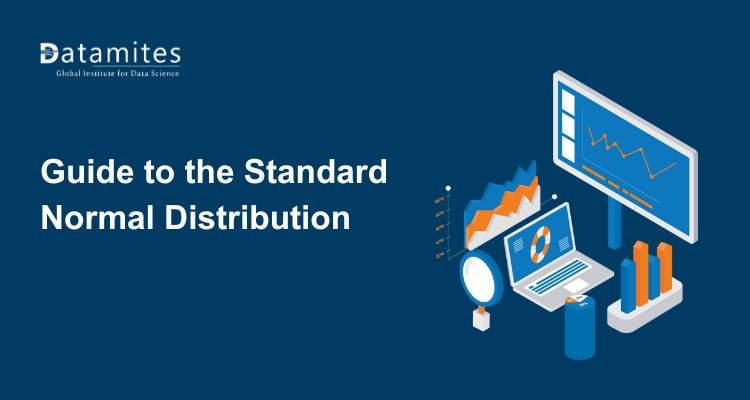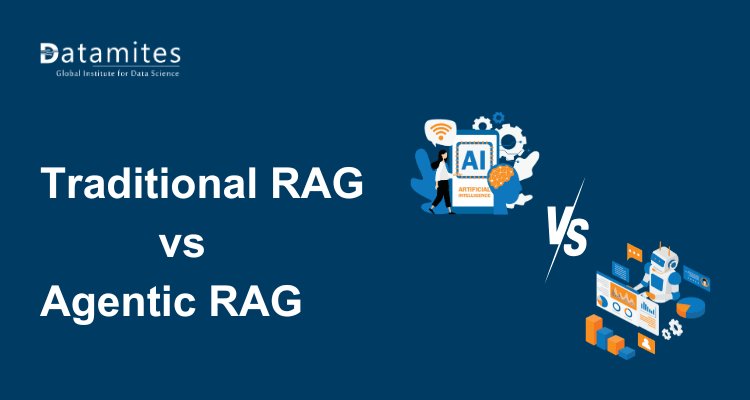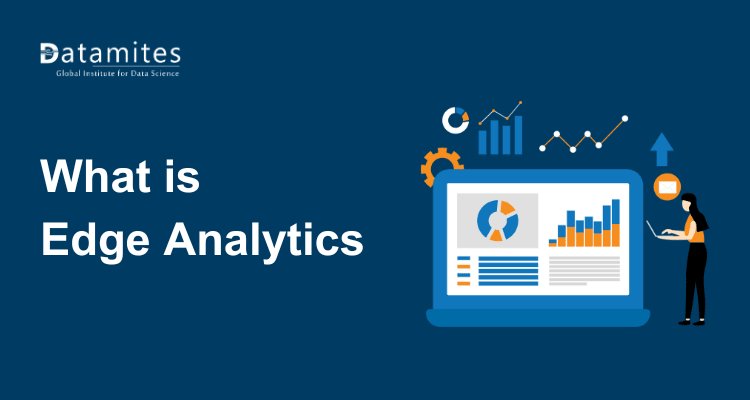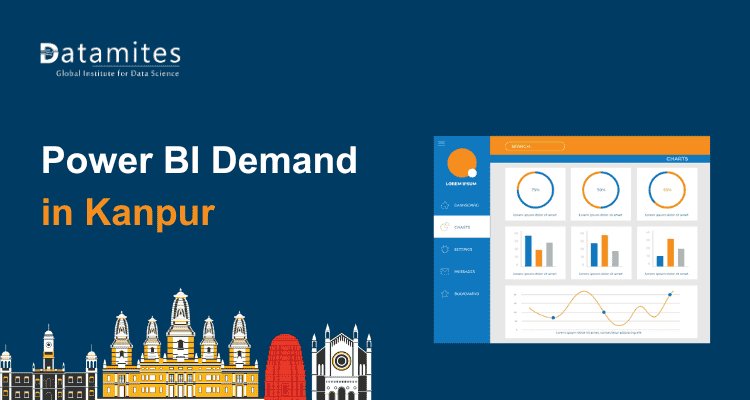A Beginner’s Guide to the Standard Normal Distribution
The standard normal distribution is a key concept in statistics used to analyze data patterns. This guide explains its properties, z-scores, and how it helps interpret probabilities and make data-driven decisions.

Ever wondered why most people’s heights, exam scores, or even daily temperatures tend to form a predictable pattern? If you plot these values on a graph, they often create a smooth, bell-shaped curve what statisticians call a normal distribution. Among all probability distributions, one stands out as the foundation for many statistical models the Standard Normal Distribution.
For beginners in Data Science, understanding the Standard Normal Distribution is crucial. It’s the building block of many analytical techniques, helping professionals interpret data, detect patterns, and make predictions. Whether you aim to become a Data Scientist or simply want to understand how data behaves, learning this concept is your first step toward mastering the world of analytics.
What is the Standard Normal Distribution?
The Standard Normal Distribution is a special type of normal distribution that has a mean of 0 and a standard deviation of 1. Simply put, it’s a “standardized” version of the normal distribution used to compare different data sets on the same scale.
In any normal distribution, data tends to cluster around the average (mean). However, since different data sets can have different means and spreads, statisticians use the standard normal form to make comparisons easier. This transformation converts any data point into what’s called a Z-score, representing how far a value is from the mean in terms of standard deviations.
It’s called “standard” because it serves as a universal reference model making it possible to calculate probabilities, compare data, and understand how extreme or common certain outcomes are, no matter what the data represents.
Formula and Properties of the Standard Normal Distribution
The mathematical formula for the standard normal distribution looks like this:
f(z) = 1 / √(2π) * e^(-z² / 2)
Let’s break that down simply:
- f(z) → represents the probability density at a given Z-score
- π (pi) and e → are mathematical constants
- z → represents the Z-score or standardized value
While the formula may look intimidating, you don’t need to calculate it manually in most real-world scenarios. Data Science tools like Python, R, and Excel can handle this automatically. What matters is understanding what it represents a perfectly symmetrical, bell-shaped curve centered around zero.
Refer to these articles:
- The Ultimate Guide to Data Science Models
- A Beginner’s Guide to Bagging in Data Science
- Top Databases Every Data Scientist Should Know
Key Properties of the Standard Normal Distribution
The Standard Normal Distribution is a special form of the normal distribution that simplifies data comparison and probability analysis. It has a few defining properties:
- Mean = 0: The distribution is centered around zero, representing the average value.
- Standard Deviation = 1: Data spread is measured in single standard deviation units.
- Perfect Symmetry: The curve mirrors evenly around the mean, making probabilities predictable.
- Total Area = 1: The entire area under the curve equals 100%, covering all possible outcomes.
- Z-Score Representation: Each value can be expressed as a Z-score, showing how far it lies from the mean.
These properties make the standard normal curve essential in Data Science for comparing datasets, interpreting probabilities, and analyzing real-world patterns.
Practical Example: Applying the Standard Normal Distribution Formula
Let’s take an example to see how this formula works in real life.
Suppose students’ scores in a Data Science aptitude test are normally distributed with a mean of 70 and a standard deviation of 10. We want to find the probability density for a student who scored 80. Let’s calculate step-by-step:
Convert to Z-score:
Z = (X - μ) / σ = (80 - 70) / 10 = 1
This means the student’s score is 1 standard deviation above the mean.
Apply the Standard Normal Distribution formula:
f(z) = 1 / √(2π) * e^(-z² / 2)
Substitute z = 1: f(1) = 1 / √(2π) * e^(-1² / 2) = 0.24197
This value (0.24197) shows how likely a score around 80 is compared to the average. From Z-tables, we find that about 84% of students scored below 80, meaning the student performed better than most of the class.
In Data Science, such calculations help compare values, detect anomalies, and understand probability-based outcomes.
Refer to these articles:
- Your Roadmap to Becoming a Data Science Architect
- The Role of Data Science in Protecting Cultural Heritage
- A Beginner’s Guide to Linear Programming for Data Science
Key Characteristics of the Standard Normal Curve
The standard normal curve is often described as a bell curve because of its symmetrical, smooth shape. It has some defining characteristics that make it unique:
1. Symmetrical Bell Shape
The curve is perfectly balanced around the mean (0). Values closer to the mean occur more often, while extreme values are rare, forming a smooth bell shape.
2. Mean = Median = Mode
All three measures of central tendency lie at the center, making the distribution evenly spread and free from skewness.
3. 68–95–99.7 Rule (Empirical Rule)
This rule explains how data spreads:
- About 68% of data lies within 1 standard deviation (–1 to +1)
- About 95% within 2 standard deviations
- About 99.7% within 3 standard deviations
It helps visualize how most data stays near the average.
4. Total Area = 1
The area under the curve equals 1 (100%), representing the total probability of all outcomes. Each segment under the curve reflects the likelihood of a value occurring.
5. Z-Score Representation
Every point on the curve corresponds to a Z-score, indicating how many standard deviations a value is from the mean. It helps in comparing datasets and spotting outliers.
For instance, if students’ test scores are normally distributed, roughly 68% of them will score close to the average, while very few will score exceptionally high or low. This principle is used across industries to analyze performance, quality, and risk.
Applications of the Standard Normal Distribution in Data Science
The standard normal distribution plays a vital role in multiple aspects of Data Science, from data cleaning to predictive modeling. Here are some common applications:
- Data Normalization: Before feeding data into machine learning models, it’s often standardized to fit a normal distribution. This ensures consistency and better model performance.
- Predictive Analytics: Many predictive algorithms assume data follows a normal distribution. Understanding this helps Data Scientists design more accurate models.
- Statistical Inference: From hypothesis testing to confidence intervals, the standard normal distribution provides the foundation for many statistical methods used in Data Science.
- Anomaly Detection: Z-scores help identify unusual data points. For example, in fraud detection, a transaction with a very high Z-score might signal suspicious activity.
- Risk Analysis and Forecasting: Financial analysts use normal distribution models to estimate probabilities of returns or losses, helping in decision-making.
Understanding this distribution gives Data Science beginners a powerful lens to interpret real-world data patterns confidently.
Real-Life Examples and Uses of Standard Normal Distribution
The standard normal distribution isn’t limited to classrooms or theory it’s everywhere around us:
- Human Height and Weight: Most people fall close to average height, with very few being extremely tall or short.
- Quality Control in Manufacturing: Factories use normal distribution models to ensure product consistency.
- Student Performance: Exam results often follow a normal curve, where most students score near average.
- Business Forecasting: Companies use it to predict demand, revenue, or customer behavior.
- Natural Phenomena: Environmental factors like rainfall, temperature, and reaction times often follow this pattern.
These examples show how the standard normal distribution simplifies complex, real-world data into understandable insights.
Refer to these articles:
Why Learning the Standard Normal Distribution Matters for Data Science Beginners
For anyone starting a career in Data Science, mastering the Standard Normal Distribution is a crucial first step. It builds a strong analytical foundation and helps beginners understand how data behaves, why certain models work, and how probabilities influence real-world decisions. This concept forms the base for interpreting patterns, assessing variability, and making data-driven conclusions with confidence.
Understanding the standard normal distribution also makes it easier to explore advanced topics like regression, hypothesis testing, and machine learning. It enhances analytical thinking, allowing Data Science learners to interpret trends accurately and evaluate model performance effectively skills that are essential for professional growth in this field.
As per Gitnux, the global Data Science market was valued at around $37.9 billion in 2020 and is projected to reach $142.9 billion by 2028, highlighting the massive potential and career opportunities ahead. Learning these foundational principles through structured Data Science courses supported by expert mentorship, hands-on projects, and placement assistance can help beginners confidently build a rewarding Data Science career in this fast-growing domain.
The Standard Normal Distribution is more than just a statistical concept it’s the foundation of how Data Science understands uncertainty and probability. From academic performance to business forecasting, it helps make sense of complex data in a simple, visual way.
For Data Science beginners, learning this concept marks the beginning of a data-driven mindset. With the right training and guidance, you can transform these insights into real-world analytical skills and build a rewarding career in Data Science.
Step into the world of data science and learn how concepts like the standard normal distribution turn data into insight. Enrolling in a data science course in Hyderabad, Bangalore, Chennai, Pune, Coimbatore, Ahmedabad, or Mumbai helps you build strong foundations in statistics, probability distributions, and data visualization, essential for real-world problem-solving. Understanding the standard normal distribution in data science enables you to calculate z-scores, interpret the bell curve, and make data-driven decisions across industries.
DataMites Training Institute leads the way with an industry-focused curriculum designed around hands-on learning. The DataMites Certified Data Scientist courses, accredited by IABAC and NASSCOM FutureSkills, cover core topics like machine learning, Python programming, MLOps, Data Engineering, and Artificial Intelligence, building essential data science skills for today’s job market.
DataMites Institute provides data science training in Pune, Hyderabad, Chennai, Bangalore, Coimbatore, Ahmedabad, and Mumbai. The program includes hands-on projects, internships, and placement assistance, helping students apply their skills and launch their careers. With flexible learning options available both online and offline, learners can access the same comprehensive curriculum, practical experience, and real-world exposure from any location.





